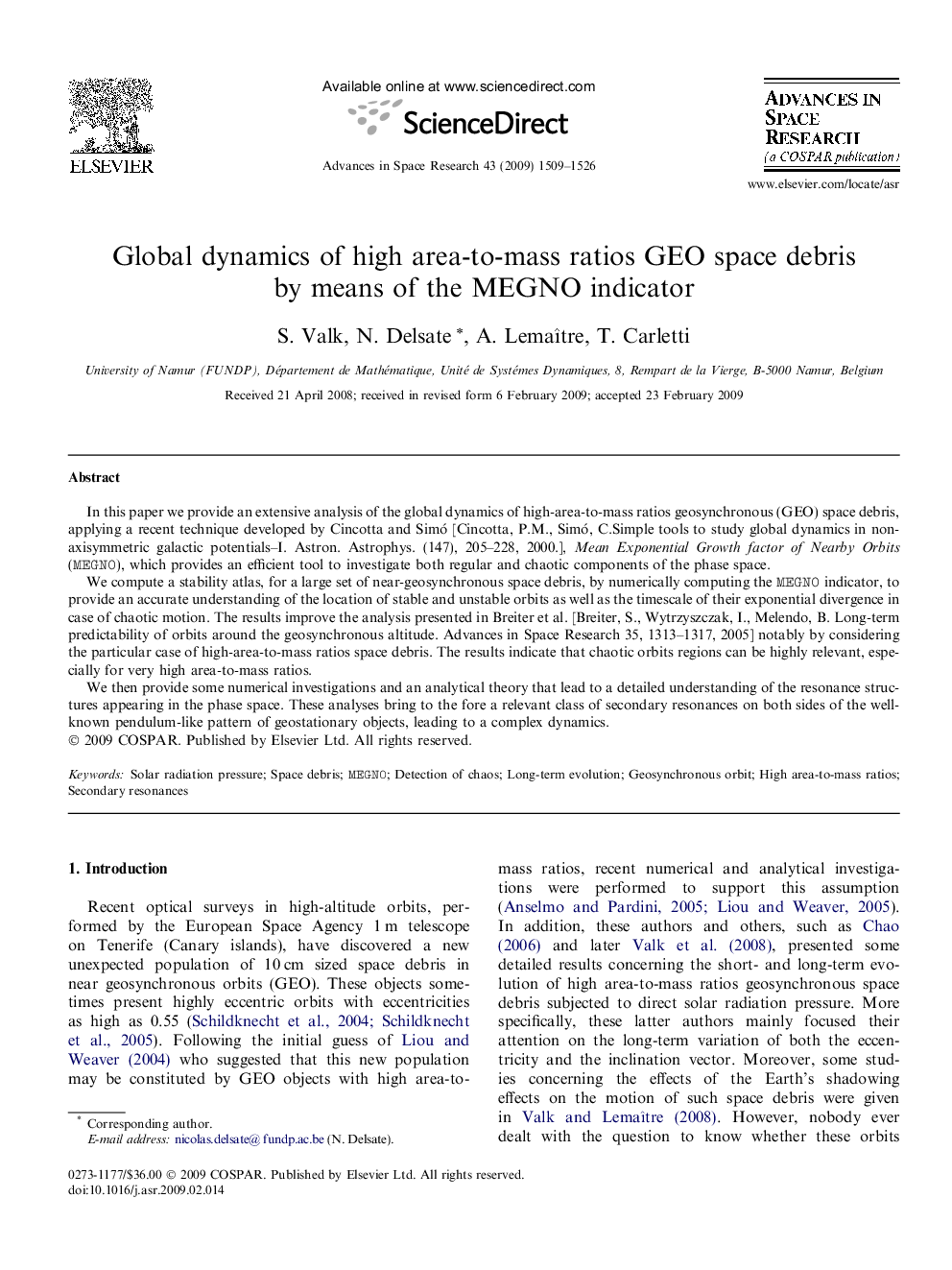| Article ID | Journal | Published Year | Pages | File Type |
|---|---|---|---|---|
| 1766899 | Advances in Space Research | 2009 | 18 Pages |
In this paper we provide an extensive analysis of the global dynamics of high-area-to-mass ratios geosynchronous (GEO) space debris, applying a recent technique developed by Cincotta and Simó [Cincotta, P.M., Simó, C.Simple tools to study global dynamics in non-axisymmetric galactic potentials–I. Astron. Astrophys. (147), 205–228, 2000.], Mean Exponential Growth factor of Nearby Orbits (MEGNO), which provides an efficient tool to investigate both regular and chaotic components of the phase space.We compute a stability atlas, for a large set of near-geosynchronous space debris, by numerically computing the MEGNO indicator, to provide an accurate understanding of the location of stable and unstable orbits as well as the timescale of their exponential divergence in case of chaotic motion. The results improve the analysis presented in Breiter et al. [Breiter, S., Wytrzyszczak, I., Melendo, B. Long-term predictability of orbits around the geosynchronous altitude. Advances in Space Research 35, 1313–1317, 2005] notably by considering the particular case of high-area-to-mass ratios space debris. The results indicate that chaotic orbits regions can be highly relevant, especially for very high area-to-mass ratios.We then provide some numerical investigations and an analytical theory that lead to a detailed understanding of the resonance structures appearing in the phase space. These analyses bring to the fore a relevant class of secondary resonances on both sides of the well-known pendulum-like pattern of geostationary objects, leading to a complex dynamics.
